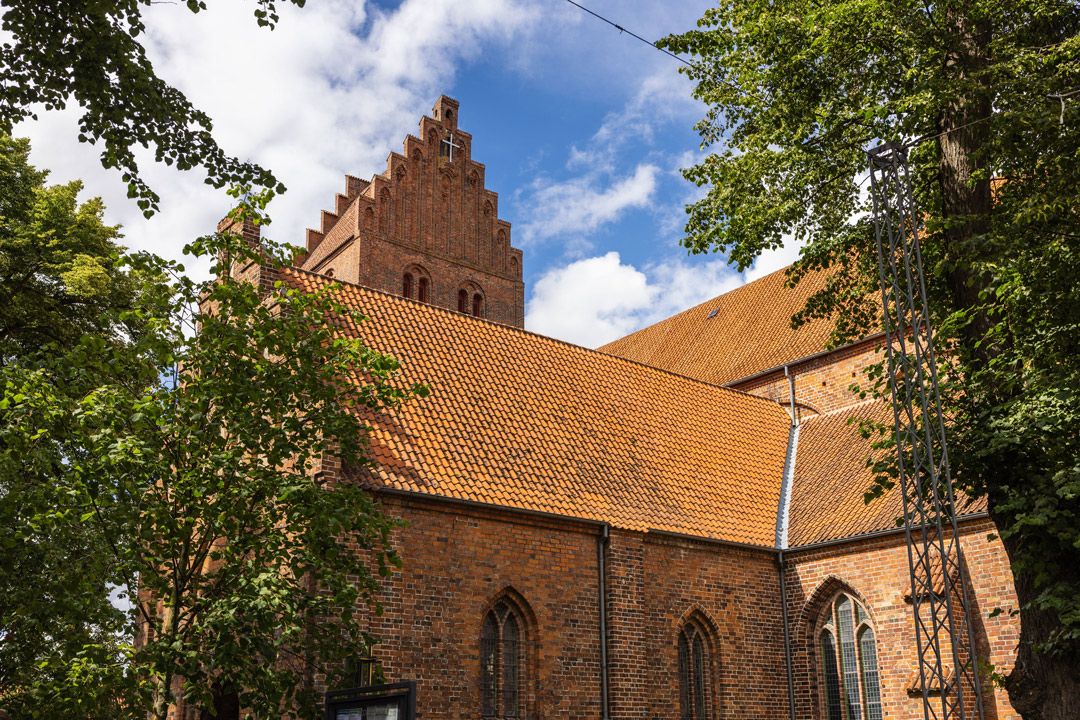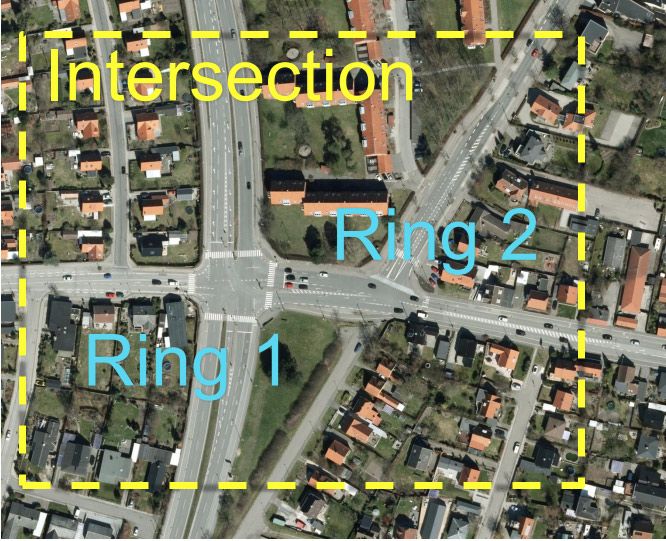SWARCO Technology Sets a New Standard for Traffic Flow on Intersections in Køge

If the coordination of inner lanes is misaligned, vehicles may face sudden delays, queues can spill back into upstream approaches, and the efficiency of the whole corridor is compromised. Traditional traffic control methods attempt to manage this complexity with predefined offsets between rings. However, once routing patterns shift or unpredictable events occur, such static setups quickly reveal their limitations.
To explore alternatives, SWARCO Technology conducted a detailed study at the Ringvejen–Søndreviadukt intersection in Køge, Denmark, using PTV VISSIM simulation to compare traditional vehicle-actuated control with SWARCO’s adaptive SmartAI platform.
Study objectives and methodology
The study set out to answer a simple but essential question: Can adaptive AI-based traffic control improve the handling of inner lanes compared to conventional methods?
Two approaches were tested under identical conditions:
Traditional traffic light control (TLC) with predefined offsets: Vehicle-actuated control tuned to expected routing patterns. While effective when traffic matches assumptions, it struggles under changing conditions.
SmartAI with inner lanes function: A fully adaptive system that continuously learns from live vehicle movements, using predictive algorithms to adjust synchronization across rings, inner lanes, and signal groups in real time.
By simulating both setups under normal and disrupted routing conditions, researchers measured average delay, number of stops, fuel consumption, and CO₂ emissions.
Scenario 1:
Business as usual
The first scenario reflected current routing patterns, where most vehicles enter from the north into Ring 1 and turn left into Ring 2.
Here, the traditional controller with offsets performed adequately since its calibration matched the prevailing traffic. However, SmartAI still provided measurable improvements:
12% reduction in average delay
2.3% reduction in CO₂ emissions
Even in relatively stable conditions, SmartAI’s ability to adapt dynamically yielded smoother flows and modest but consistent environmental benefits.
Scenario 2: Unexpected routing change
The second scenario simulated a sudden shift in traffic: instead of a dominant north–south pattern, flows changed to an east–west configuration. This disruption is a typical challenge for urban traffic managers, as it reflects the unpredictability of daily traffic—caused by detours, events, or temporary closures.
In this case, the limits of the traditional TLC became evident. With its offsets fixed for the original routing, queues quickly built up, delays escalated, and fuel consumption rose.
SmartAI, by contrast, adapted immediately. By re-learning routing distributions in real time, it synchronized phases across rings and inner lanes to optimize throughput. The benefits were striking:
47% reduction in average delay
39% fewer stops
22% lower CO₂ emissions
On a corridor level, this translated into an hourly saving of 91 kg of CO₂—a clear indicator of the system’s sustainability potential.

Why it matters for cities and road users
Beyond the percentages, these results have tangible meaning for everyday mobility. For road users, fewer stops and smoother progression translate into shorter travel times, less fuel wasted in idling, and reduced stress. For city authorities, the benefits accumulate at scale: lower emissions, improved air quality, and reduced congestion across the network.
Adaptive systems like SmartAI also enhance resilience. Whereas traditional controllers must be manually reconfigured to cope with changing traffic, SmartAI continuously fine-tunes its logic, making the system far more robust in the face of disruptions. This adaptability is especially valuable as cities deal with dynamic challenges such as construction detours, special events, or unexpected incidents on the network.
Implications for the future
The Ringvejen–Søndreviadukt case study underscores the limitations of static, offset-based traffic control. While such methods may work under predictable conditions, they fall short when traffic dynamics change. SmartAI demonstrates that self-learning, adaptive control systems can maintain efficiency across a range of situations, even in the face of unpredictability.
For cities striving toward sustainability goals, the implications are clear. Cutting CO₂ emissions by tens of kilograms per hour at a single intersection scales to meaningful climate impact across an urban network. Combined with broader mobility policies, adaptive traffic control becomes a cornerstone technology for smarter, greener, and more livable cities.
As the study shows, the future of traffic management lies not in rigid schedules, but in intelligent systems that learn, adapt, and deliver measurable benefits to enable The Better Way. Every Day.